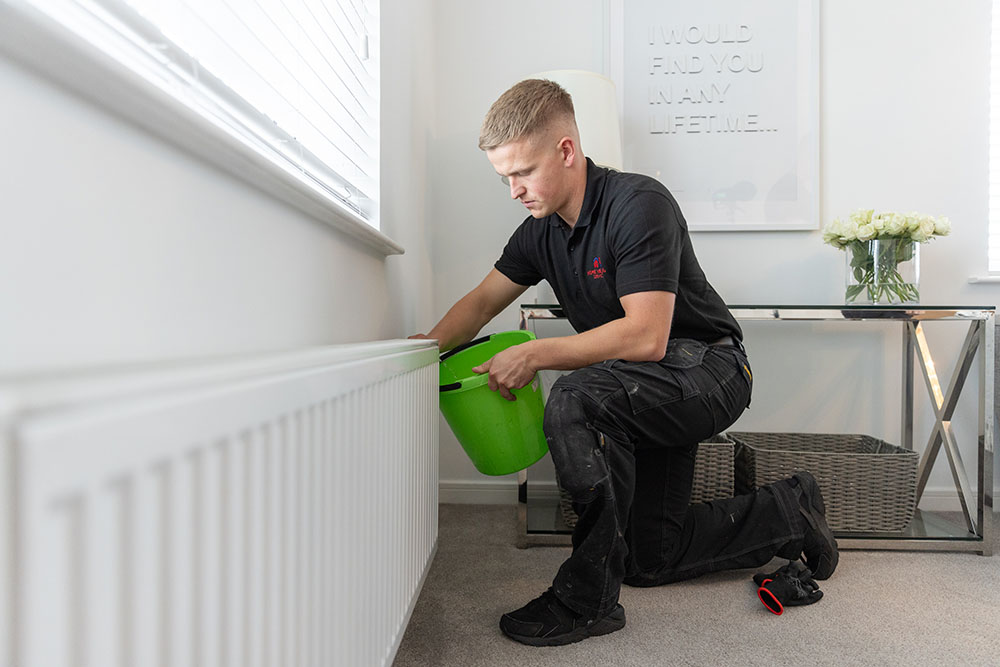Efficiently maintaining your heating system and ensuring a warm home requires the occasional task of
bleeding your radiators. Trapped air can hinder the heat output of your radiators, so it's important
to remove it. You can follow these steps to learn how to bleed your radiators effectively.
- Please turn off your heating system and allow it to cool down.
- Place a towel and a jug underneath the bleed valve on the radiator.
- Insert the radiator bleed key into the valve and slowly turn it anti-clockwise.
- You will hear a hissing noise as air escapes. Close the valve when water starts to come out.
- Repeat this process for all the radiators in your home.
- Turn your heating back on and ensure the radiators are heating correctly.
Top tip - When bleeding multiple radiators, start with the one farthest away from your boiler, as
it likely contains the most air.
Bleeding a radiator involves removing excess or trapped air within the system. When air accumulates, it
prevents the radiator from heating up thoroughly, resulting in cold spots. By bleeding the radiators,
you allow the hot water to circulate properly and improve the overall efficiency of your heating system.
Please look for cold spots or slow heating to see if your radiators need to be bleeding. Gurgling noises
when the heating is on can also indicate trapped air. If unsure, try bleeding one radiator to gauge the
air present. Once all the air is released, the hissing noise will stop, and water will appear instead.
You only need basic tools to bleed your radiators, including a jug or tray to catch any excess water, an
old towel, and a bleed key. These tools are readily available and simple to use.
Regularly bleeding your radiators is a quick and easy process that can significantly improve the
efficiency of your heating system, making your home more comfortable. If you need any more help or have
any concerns, please don't hesitate to contact us.
